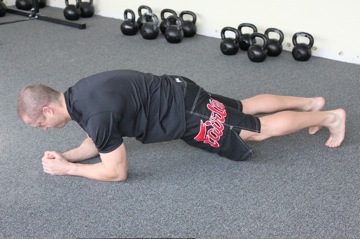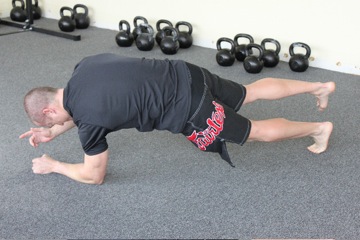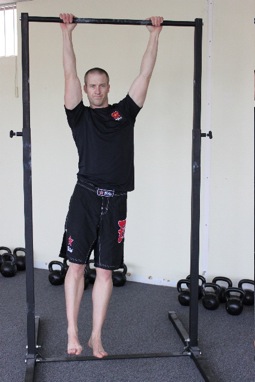In fighting there is often talk of "distance" or "bridging the gap". What many don’t realize is that the concept of creating space, or removing it, from your opponent is also found in strength training and can be used to instantly increase your strength and power in certain situations.
One of the core concepts of the RKC School of Strength is the manipulation of space within your body to create tension. When you remove gaps in the chain of movement, and tighten the space within your body, you form a more stable platform to produce force from.
Many people seek to reproduce movements from their sport in the gym thinking that this will have greater carryover to their sport performance. The short version is that it doesn’t. For assistance training to have any real carryover to the activity it needs to be performed at similar joint angles and at similar speeds to those seen within the sport. Instead, it is a much better practice, for most, to use methods of training that teach the body correct movement. Movement is a skill that crosses from the gym to the mat and is not angle or speed specific.
The ability to maximally shorten the body at the right time, to produce tension within, is like the ability to compress a spring quickly in order to store huge amounts of potential energy. Starling’s Law states that a pre-stretched muscle has more potential to produce force, so by pre-contracting the body we are priming it to be stronger, hopefully overpowering our opponent.
One of the best drills to teach this is the Hanging Leg Raise. A Hanging Leg Raise has the hands facing away from you, a thumbless grip, and for best results the legs should remain straight throughout. Apart from being a tough as nails ab exercise it has excellent carryover to everything from grappling to climbing fences or defending strikes.
The Hanging Leg Raise is actually one of the best all round strength builders, but not for the reasons many will attribute to it. As mentioned before, there is little point in chasing massive carryover from your gym work to your sport. I am going to use it to show you how to tighten the body and then transfer that skill to your clinch or takedown attempt.
We’re going to start with a variation of the Plank. Before beginning, perform a Thai clinch or head snap takedown to get a baseline for your speed and power.
The Plank is a great drill to teach linear stability and body tightening. Most people just "assume the position". That is, they prop themselves on their elbows and toes and try to relax as much as possible. Remember though, that the key element we are after is the tightening of the body, to pre load it, to increase force production. To do this in a Plank position it is important to "harden" the body. Imagine, while in the position, that someone is going to hit you and try to push you around and you must maintain that position. To accomplish this you will need to brace the abdomen, tighten the glutes, and draw your hips slightly forward, draw the kneecaps towards the groin and imagine dragging your elbows towards your hips to activate your lats and consciously minimize the space from your armpits to your hips. Don’t expect to hold this position for long - a thirty second hold done correctly is brutal.

Test again with your Thai clinch or head control to see the gain in power from this simple drill.
To supercharge this drill, try the following option - From the basic Plank position rotate to one side so that one leg and arm come off the ground. Now shorten and "close the gap" within the body on the down side. Hold that for five to ten seconds and then repeat on the other side. Once both sides are done, immediately drop down into the Plank again, and keeping your new shortened position and tightness, notice the extra tension and compression in your body in the Plank. Stand up and repeat your Thai clinch/ head snap to notice improvement.

The next step in building this skill is to move to the Pull Up bar. If you haven't been able to do a Hanging Leg Raise before, I urge you to try now, setting yourself on the bar the same as you did for the last Plank drill - grab hold of one side and actively pull yourself together, drawing the shoulder in and down to set it in the socket, remove the space from the armpit to the midsection, then with one hand set in place do the same with the other hand. Don’t let go of that tension! Now try a Hanging Leg Raise. Many will find that all of a sudden they are now able to perform one for the first time.

After a few test reps, go back to your Thai clinch, head snap, etc. and test to see the improvements. You won’t need many reps to make the most of this powerful drill. The Plank and the hanging Leg Raise and its Hardstyle variations, such as the drills found within
Hardstyle Abs, are excellent drills to teach tightness and address power leakages within the body. Adding them into your training will make your grappling and striking much, much more effective.
RKC Team Leader Andrew Read is Director of Dragon Door Australia, located in Moorabbin, Melbourne it is the home of Australian Hardstyle and
kettlebell training.
Resources:
Back